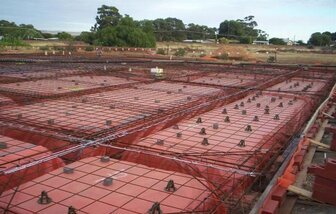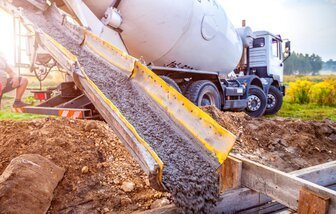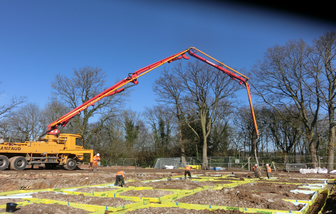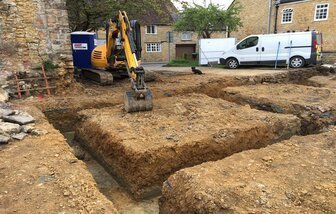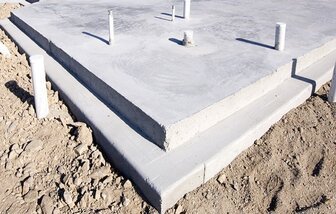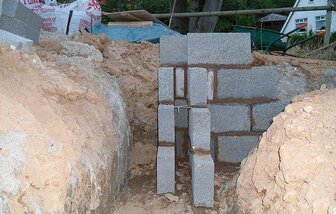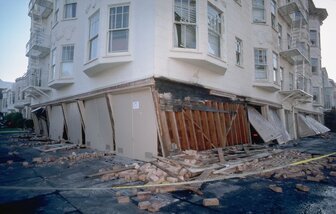Why building foundations fail
Understanding the factors that contribute to building foundation failures in the UK, such as soil conditions, poor drainage, tree roots, construction errors, subsidence, and the age of buildings. Taking preventive measures can help minimize risks and ensure stable and durable structures. Learn more about building foundations and how to prevent failures.
Why Building Foundations Fail: Main Reasons in the UK
Building foundations are crucial for the stability and longevity of any structure. However, there are various reasons why building foundations can fail, leading to structural issues and costly repairs.
In the UK, several factors contribute to foundation failures. In this article, we will explore some of the main reasons behind building foundation failures in the UK.
In certain areas of the UK, geological factors can contribute to foundation failures. These include the presence of underground springs, weak rock formations, or areas prone to landslides. Understanding the geological conditions of a site is crucial during the planning and construction phases to mitigate potential risks.
By being aware of these common causes of building foundation failures in the UK, homeowners and construction professionals can take proactive measures to prevent or address issues before they become severe.
Regular inspections, proper drainage systems, and adherence to construction standards are all essential in ensuring the stability and longevity of building foundations.
The UK experiences a range of environmental factors that can impact building foundations. These include extreme weather conditions such as heavy rainfall, freezing temperatures, and drought.
Excessive moisture can cause soil erosion and instability, while freezing temperatures can lead to frost heave, where the soil expands due to freezing water.
Drought conditions, on the other hand, can cause soil shrinkage and settlement. Proper foundation design and construction techniques that account for these environmental factors are crucial.
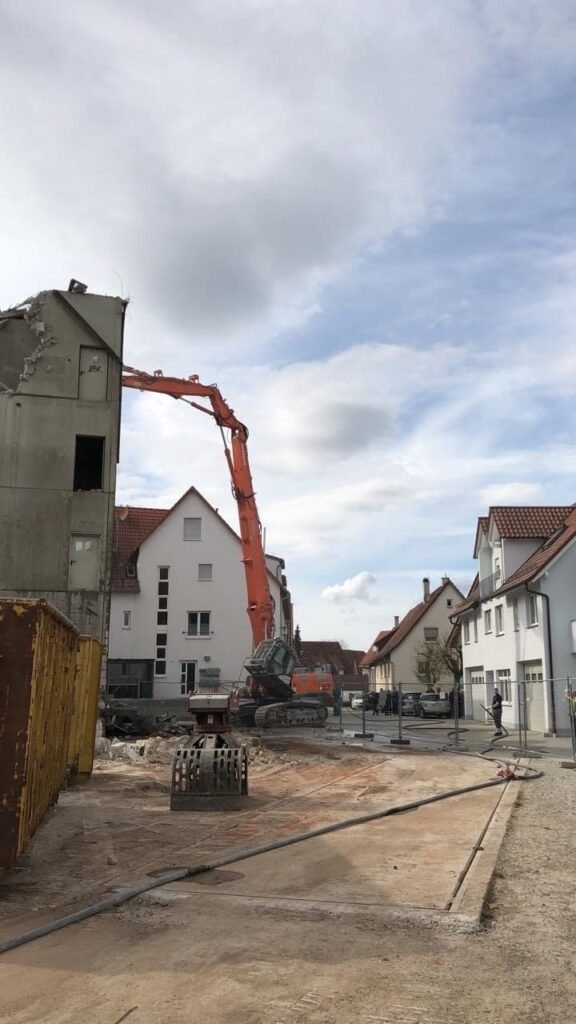
One of the primary reasons for building foundation failures in the UK is poor soil conditions. Different regions in the UK have varying soil compositions, and some soils are more prone to movement and instability. For instance, clay soils are known to expand and contract with changes in moisture levels, leading to foundation movement and potential damage. Similarly, loose or sandy soils may not provide adequate support for the foundation, causing it to settle unevenly.
It is essential for builders and developers to conduct thorough soil investigations before constructing a building. Understanding the soil conditions and implementing appropriate foundation design and construction techniques can help mitigate the risks associated with poor soil conditions.
Another significant cause of building foundation failures is improper design and construction. In some cases, foundations may be undersized or not designed to withstand the load requirements of the structure. This can lead to excessive settlement, cracking, or even collapse of the foundation.
Inadequate construction practices, such as insufficient reinforcement or improper concrete curing, can also contribute to foundation failures. It is crucial for builders and contractors to follow industry best practices and adhere to relevant building codes and regulations to ensure the structural integrity of the foundation.
Water-related issues can have a significant impact on the stability of building foundations. Poor drainage systems, improper grading, or excessive groundwater can cause water to accumulate around the foundation. This can lead to increased hydrostatic pressure, which can exert significant forces on the foundation walls and cause them to crack or bow.
In the UK, heavy rainfall is a common occurrence, and without proper drainage systems in place, the excess water can pose a threat to the foundation. It is essential to implement effective drainage solutions, such as French drains or waterproofing systems, to prevent water-related foundation issues.
Trees can enhance the beauty of a property, but their roots can also cause foundation problems. In the UK, certain tree species have extensive root systems that can extend beneath buildings and extract moisture from the soil, leading to soil shrinkage and foundation settlement.
It is important to consider the proximity of trees to the building during the design and construction stages. Implementing root barriers or choosing tree species with less invasive root systems can help minimize the risks associated with tree roots and foundation damage.
Subsidence and heave are two common foundation issues in the UK. Subsidence occurs when the soil beneath the foundation shrinks or collapses, causing the foundation to sink. Heave, on the other hand, happens when the soil swells due to increased moisture content, causing the foundation to lift or heave upwards.
These issues can be caused by a variety of factors, including changes in soil moisture levels, nearby vegetation, or even nearby construction activities. Monitoring and early detection of subsidence or heave is crucial to prevent further damage to the foundation and the structure above.
Building foundation failures in the UK can be attributed to various factors, including poor soil conditions, improper design and construction, water-related issues, tree roots, and subsidence or heave. By understanding these main reasons behind foundation failures, builders and developers can take appropriate measures to mitigate the risks and ensure the long-term stability and safety of the structures they build.
Building foundations are crucial for the stability and longevity of any structure. However, in the UK, there are several factors that can contribute to foundation failures. Understanding these factors is essential for homeowners, builders, and architects to ensure that proper measures are taken to prevent such failures.
Inadequate drainage is another common cause of foundation failures. When water accumulates around the foundation, it can exert pressure on the walls, causing them to crack or shift. This is especially prevalent in areas with heavy rainfall or improper grading that directs water towards the building. Additionally, poor drainage can lead to soil erosion, further destabilizing the foundation.
Many buildings in the UK are several decades or even centuries old. Over time, the foundations of these structures may deteriorate due to natural wear and tear, inadequate maintenance, or changes in the surrounding environment. Aging foundations are more susceptible to failures, and regular inspections and repairs are necessary to ensure their stability.
Foundations for the Empire State Building?
The Empire State Building, standing tall and proud in the heart of New York City, is an iconic landmark that has captivated people around the world for
Why building foundations are necessary?
Foundations are the bedrock of any building, be it a humble house or towering high-rise buildings. They have the vital job of transferring the entire weight
The perfect concrete pour for your construction project
We will discuss the dos and don’ts of concreting for your next construction project, covering aspects such as the concrete mix, pouring, curing process
What is a raft foundation?
Raft foundations are a popular choice for many construction projects, providing a stable and durable base for buildings. Explore the benefits of raft foundations, the construction process
What is a building foundation?
A building foundation is the lowermost part of a structure that is in direct contact with the ground. It is designed to distribute the weight of the building evenly and transfer it to the underlying soil or rock.
Types of building foundations
This article discusses the different types of building foundations in the UK, including strip foundations, raft foundations, piled foundations, trenchfill foundations, pad foundations, caisson foundations
How long do foundations take to cure?
A step-by-step guide is required, starting with marking lines to indicate where to dig the foundations trenches. After landscaping, shuttering, reinforced with timber, must be used
How to set out building foundations
Setting out the building foundations of a construction project is a critical stage, and it requires the use of specialised tools and materials. In the UK, the most common tools
How deep do building foundations need to be?
Building foundations are a critical component of any construction project in the UK, and it is important to ensure that they are constructed to the required depth.
Foundation building regulations
The regulations are designed to ensure that construction projects are structurally sound and meet certain safety standards. This includes the use of appropriate foundation systems
What is a building slab?
Building slabs are an essential component of construction projects in the UK. They provide a solid and stable foundation for structures, distributing the weight evenly across the ground. This article discusses the types of building slabs commonly
Why building foundations fail?
Understanding the factors that contribute to building foundation failures in the UK, such as soil conditions, poor drainage, tree roots, construction errors, subsidence, and the age of buildings.
Ready to start your project?
Let's Work Together
To get started, for general enquiries simply complete the form below. Provide us with your project details, and our team will review your requirements. We will then get back to you with a customised solution that fits your needs. Whether you have a small-scale project or a large-scale development, we have the expertise and resources to handle it. Once we have received your submission, you will receive a confirmation email (Please check all your email boxes)
If you prefer, and have a project in mind and seeking a price you can also send us your project documents and any photographs directly to admin@totalgroundworks.co.uk We will carefully examine your documents and provide you with a competitive quote together with a timescale from inception through to completion for your project.


